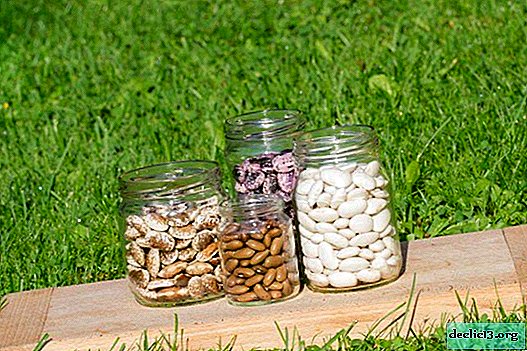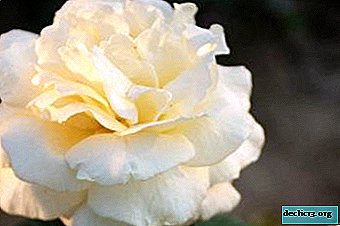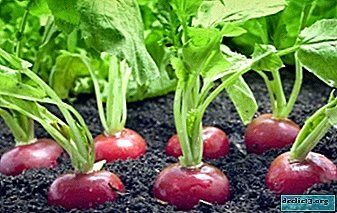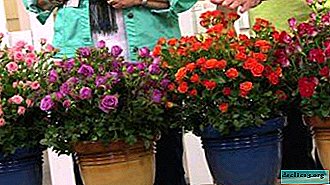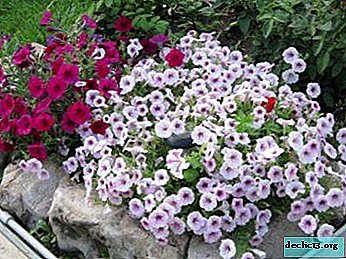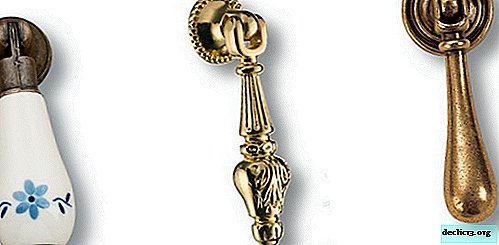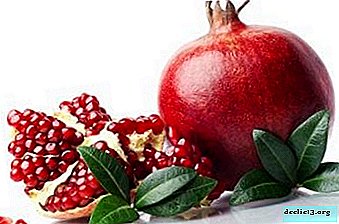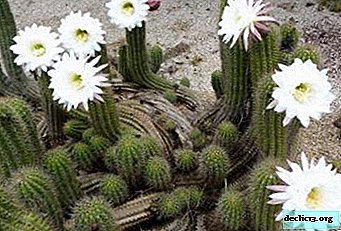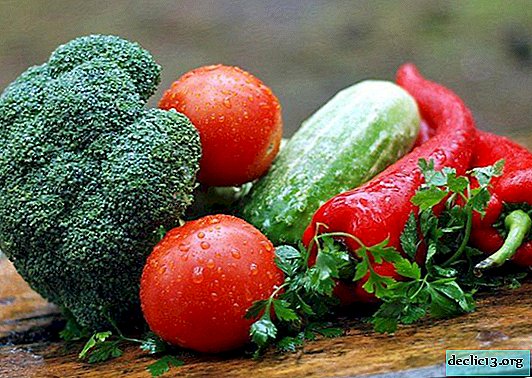Photo and description of aphid species. Asexual, cabbage and many others
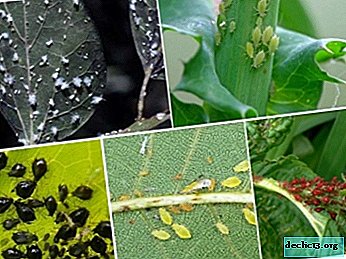
Aphid is an insect that all gardeners and gardeners do not like. The insect multiplies very quickly and can destroy the crop in a greenhouse and open ground.
Aphids settle on the plant and suck out the juices from it. The insect quickly multiplies and populates cultures with numerous colonies.
Aphids are many, the number of species reaches several hundred. In the article we will tell you what insects are, show a photo of cabbage and many other varieties.
Melon or cucumber

The body is slightly elongated, the back is pointed and painted in different shades of green. Mustache and paws of black color. It lives everywhere. Most often found on:
- gourds;
- cucumbers;
- beets;
- tobacco
- peanuts
- citrus fruits;
- sesame seeds;
- eucalyptus.
Features of development: partogenetic reproduction, development - an incomplete cycle. During the season, 2-3 generations of asexual virgins change. From one female, up to 50 individuals develop. This species is one of the most harmful. The main danger is active fertility and rapid spread.
Asexual

Even this aphid species is very prolific. This type of reproduction is called partogenesis. If you do not start the fight in a timely manner, the pest will destroy the entire crop.
Large cereal

Greater harm to cereals (affects oats, barley, wheat, rye and other wild cereals), meadows and lawns. Wingless insects. The species belongs to monoecious.
Reproduction is partogenetic and bisexual. The development cycle is incomplete. Up to 30 generations develop during the revitalization season. Appear from the egg, where they hibernate. The eggs are initially green in color, with the development of aphids it becomes shiny and black.
Cherry

Pests of fruit stone fruits. Refers to a dioecious species.
The life cycle is a lot of different generations. During the growing season, it multiplies by the partogenetic method and bisexual. It also hibernates in the egg. Pests hatch without wings. By autumn, wings grow.
Gall

It differs in an oval-shaped body of a light green or yellow hue. Antennae are long, black or dark brown. Winged females develop a pair of transparent wings. The total aphid length does not exceed 3 mm.
Most often, pests attack currants by eating its leaf plates. In a short time they can ruin the whole bush. Aphids are ubiquitous. Parasites suck the juice from the leaves, at this place swellings of yellow or burgundy color - galls form.
Pea

The egg is black and resembles an ellipse in shape. The founder and the virgin are characterized by an oval body, expanding on the sides. The body is painted green, brown or even black.. It is covered with a light coating.
In winged individuals, the body is lighter. The main harm is done to the fruits themselves. After the attack of the parasites, holes appear on the peas, they turn yellow and dry.
Green

The pest has a light green body with a slight pink and yellow tint. Body length does not exceed 2.5 mm. Habitats - Asia, Europe and America. The main purpose of green aphids:
- plums
- cherry plum;
- cabbage;
- potatoes;
- tobacco;
- peach;
- radish;
- dill;
- pepper;
- parsley;
- greenhouse crops.
Cereal

There are up to 20 subspecies of this species in the world. Individuals have a unique ability to adapt to any adverse conditions. Belongs to monoecious species, development is incomplete. During the growing season, up to 30 generations appear.
Cabbage

The parasite is distinguished by a wide oval body of a pale green hue. Short antennae are also present. Distributed in all regions except subtropics. It lives mainly on cruciferous, most often found on radishes and cabbage.
In regions with a warm climate, development is incomplete, in the remaining regions, a full development cycle. About 15-25 generations appear per season. The main harm - multiplies massively, sticks to the culture, does not allow it to develop and leads to death.Root

The body is colored yellow, white or green. Its shape is ovoid. At the same time, the head, antennae and breast are different in color - they are brown. The whole body is covered with a faint light coating, similar to wax. Distributed across all continents. It can be found on any plant.
Females spend the winter in the soil, with the advent of spring they lay the larvae from which the offspring is born. The main harm is to suck the juice from the side roots, thereby blocking the flow of nutrients to the entire plant.Cochineal

This group includes several subspecies of insects. A special substance is extracted from female aphids, which is a natural dye. Aphids stick to the plant, suck out all the juice from it. In this case, the habitat does not change. On the same sheets it is fertilized, lays eggs and dies.
Red

The red-brown body is usually hidden in a small ball of white fibers. The length of insects does not exceed 2 mm, the body of the egg is similar. The chest, head, abdominal cavity and legs are clearly manifested on the body. Adult females have an ovipositor. Most often, it attacks trees from which it sucks sap.
Krasnogallovaya

Small pests, the length of which reaches 2.5 mm. The body is a yellow-green hue. In this case, the chest and head are gray-brown. Larvae are very small, white in color. Up to 50 larvae can develop on one leaf.
They eat currants and apple trees. They settle on the reverse sides of the leaves and suck out the juice from them. Affected crops cease to bear fruit, their leaves fall off, in the absence of treatment can die.
Corn

The second name is sorghum. The body is oval, elongated, gray-green hue. Legs and antennae darker - almost black. In mid-autumn, it is inhabited by spring and winter. They live in the sinuses of the upper leaves.
They like warm air - up to 25-28 degrees, the optimal humidity for them is 65% -75%. Aphid gives up to 12 generations per season.
Peach

Females have a round trunk of brown color, the length of which reaches 5 mm. The head is different - it is black with dark antennae. The male has the same color, but its size is smaller. Lay eggs of an orange hue, which eventually darkens to brown., and after 2-3 days the egg turns black. Distributed in the steppe regions and Crimea. Most affected fruit trees and nuts.
This species of aphids is monoecious; for the winter they remain in the eggs, which are located under the bark of trees or on the inside of the branches. In mid-spring, the larvae begin to actively develop, within a month they become full-fledged insects.
Beetroot leaf

The body is brown or black, covered with a touch of light. In individuals with wings, the antennae, legs and wings are lighter. Distributed in Europe, North America, Central Asia and the Caucasus.
It affects:
- potatoes;
- beets;
- sunflower;
- spring vetch;
- poppy;
- raspberries;
- legumes.
Black

Small insect with a dark body up to 5 mm long. It feeds on the juice of young leaves and shoots. Chooses a plant that contains a lot of carbohydrates and amino acids. The female lays eggs, for this she does not need to mate with the male. They hibernate in eggs on a fodder plant.
Garden

It affects mainly garden crops. The body length does not exceed 2.5 mm. It is located on the lower sides of leaf plates, settling there in large colonies. Over the entire period of life, they practically do not move to other leaves.
Flying

This species of aphid has well-developed wings, especially for females. Body light shade, length dr 3 mm. They can move to other leaf plates and even other plants.
Aphid is an insect that spreads very quickly. therefore if a pest is detected, the fight must be started immediately. Otherwise, the aphids will eat all the crops.
Useful video
We offer you to watch a video about aphid species:



